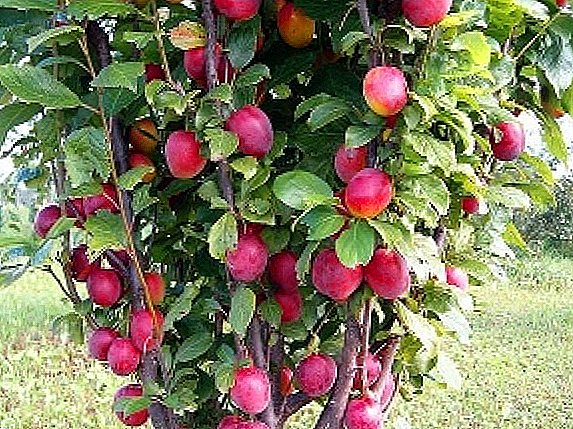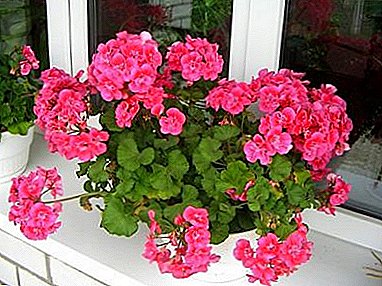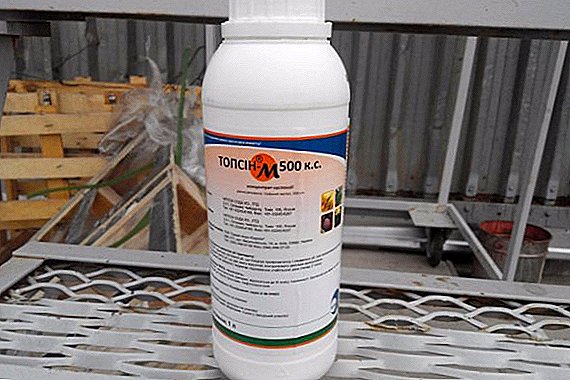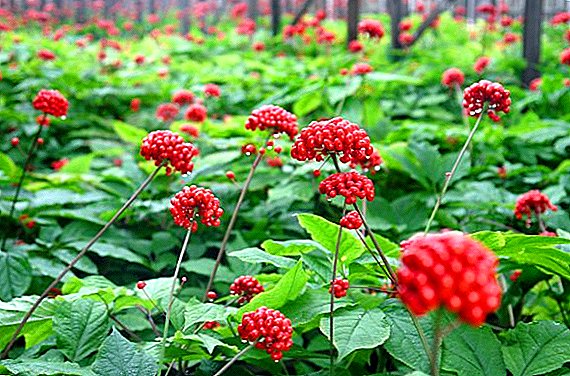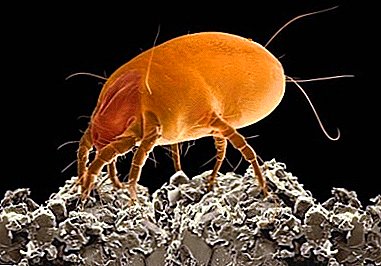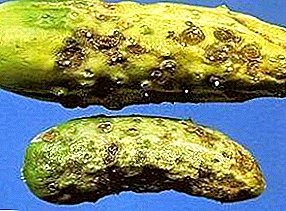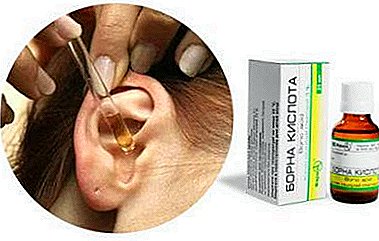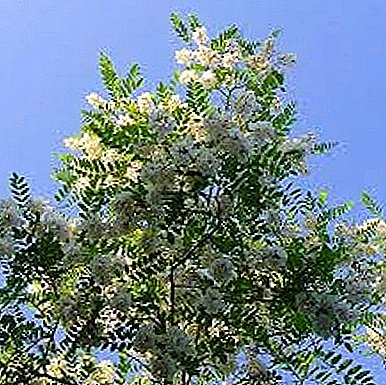
This tree has many names: Robinia pseudo-and pseudo-acacia, ordinary, pseudo-acacia. And the people at all heart grass, pea tree, dental root.
The white acacia tree is beautiful. Gorgeous floral tassels or sprawling crown - it easily wins attention. If you want to grow such a beautiful woman yourself, our article is for you.
Robínia pseudoacácia is from North America. Now it can be found in different parts of the planet, in places with a temperate climate. Popular in Europe, Australia, New Zealand, in some parts of Africa, Asia. In Russia, the first seeds of the white stock hit the ground in 1804. Since then, this tree adorns the city parks and summer cottages of our country.
Appearance

- White acacia is a large tree that can grow up to 30-35 m, however, the average height is usually 20-25 m.
- She has the most powerful root system, which makes it the best tree to create forest belts.
- Trunk cut deep furrows, color - dark (gray or brown). Its width sometimes reaches one meter.
- Crown acacia is thick and sprawling, seems lacy due to odd-pinnate leaves.
- Each sheetThe length of which is 10-25 cm, consists of 9-19 elliptical leaflets.
- Flowers Acacia white are not only white, but pale pink. The bending buds of the inflorescences produce a pleasant aroma, for which the acacia is so loved.
- Fruit white acacia - beans oblong brown color.
Choosing a place and time for landing

Growing robinia pseudo-acacia is a feasible task even for novice gardeners. The main thing is to remember 2 points about her preferences.
- Tree loves a lot of sun.
- Tree does not love much water.
If your site is located near the swamp, if your territory is predominantly shady, then alas. To grow white acacia in such conditions will not work.
The future tree is planted in open ground in spring. This should be done before bud break. If you plant in the fallthen low temperatures and high moisture content in the soil can harm the delicate robinia roots.
Landing on the site
To define it is simple: if the roots of the plant are visible through the drainage holes, then all is well. And the appearance should please: not a thin trunk, smooth branching, developed root system.
Pit for planting should be comparable to the size of the root system. Consider that the roots will first grow deep into, and only then expand. Dense soil should be loosened in advance, drainage to the bottom of the pit should be filled up to 20 cm. Add compost and sand to the removed soil so that the resulting seed mixture does not become too greasy. Season the mixture with lime materials (crushed limestone, ash or others), mix them well with the soil.
Care for white acacia
Although robinia is not a capricious representative of the plant world, timely care will prolong the joy from the contemplation of this beautiful plant. The following tips will help you properly care for her.
- Be prepared to maintain a warm and humid microclimate.
- Protect your seedling from the neighborhood with weed plants. Particularly dangerous are those with long roots.
- Do not plant flowers near the acacia that require deep tillage.
- The first few years after planting insulate seedlings for the time of winter. For this purpose, suitable peat or dry foliage. Sheath layer - 10 cm.
- 3 years after planting, start feeding the tree with complex mineral fertilizers.
- Do not cut unnecessarily! Frozen winter branches are removed after flowering.
In the first years of life, a sapling adds about a meter in growth every year. Then the pace is slightly reduced. White acacia lives up to 50 years.
Breeding

It is possible to propagate white Akatsyu with both seeds and root suckers. If you buy seeds in the store, then remember that they remain viable for 3 years. See the deadline for implementation.
Before planting, seeds should be soaked in hot water and left to cool. Wet seeds are sown in boxes to a depth of 1-2 cm In May, seedlings are transferred to a greenhouse. In mid-June, it needs to be planted at a distance of 25 cm into the soil.
Diseases and pests
This is a tree practically not exposed the influence of pests and diseases. Australian grooved and citrus mealy worms, a sackbutton can cause him harm.
These insects like the green parts of the tree and even its bark. To get rid of them, you need to timely collect from young seedlings of caterpillars and worms, their eggs. Additionally, treat with hydrocyanic acid.
Chemical composition
Scientists need to continue to investigate the composition of the plant. The least studied part is the fruits. In different parts of Robinia there are mucus and pectins. The flowers are rich in glycosides, essential oils, esters, leaves - flavonoids, and woody parts - tannins, robinin, phytosterol and other elements. The content of fatty oils reaches 15%.
Toxins are found in the roots, seeds, and bark of the white acacia!
What is useful tree? Healing Properties of Acacia White
White acacia is used as an antipyretic, expectorant, anti-inflammatory, antispasmodic, hemostatic and diuretic. From the flowers, bark and leaves of this tree make infusions, tinctures and decoctions.
Plant-based drugs are prescribed with viral diseases, problems with joints, with constipation, ulcers, female diseases, diseases of the bladder. Use any drugs only after the exact appointment of a doctor!
White acacia - most beautiful representative of the world of flora. Plant it in your garden, and each summer will begin to bloom and the fragrance of this tree.
A photo
Then you can see a photo of a blooming Robinia tree of a false acacia (white acacia):




- Types of Acacia:
- Yellow Acacia
- Lankaran Acacia
- Black Acacia
- Silver Acacia
- Sand Acacia
- Pink Acacia
- Acacia Catechu
- Care of Acacia:
- Acacia in medicine
- Flowering Acacia
- Landing Acacia


